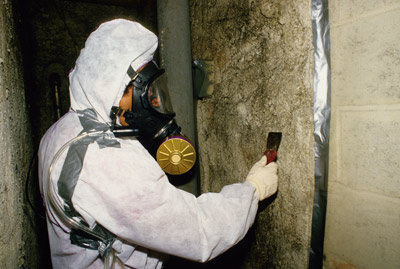Many people choose to purchase older homes and do the renovation work themselves. Asbestos was once used for insulation, fireproofing and soundproofing in older homes. This material can cause a number of diseases, including asbestosis, mesothelioma and lung cancer. Using safe methods and equipment can help reduce your risk of health problems.
Where asbestos is found
In the past, asbestos was used in many different ways in home construction. It can be found in linings of walls and ceilings, floor tiles, bath panels, insulation panels and in central heating flues. It was also used in siding, garage and sheds roofs, boilers, eaves, gutters, and as a loose material between partition walls.
Renovation work on any of these areas can loosen asbestos into the air where it can be a hazard to those working in the area. It can also linger in the air and endanger the health of family members. Diseases from asbestos can occur up to 30 years after the exposure. Safe removal and disposal practices are critical when working with asbestos.
Leaving asbestos in place
You should leave asbestos in place if possible during renovation work. Covering the asbestos with an alkali primer and paint will help to seal the asbestos in place. Wallpaper can also be used to cover and seal in asbestos materials in home. Avoid scraping or sanding asbestos surfaces to avoid releasing the material into the environment.
Proper equipment
The proper equipment will help to prevent ingesting the fiber of asbestos loosened during renovation work. Disposable overalls will keep the fibers off your regular clothing and prevent transference to other areas. Use disposable, single-use gloves and dispose of them properly. Wear a half-face, dual-cartridge respirator with HEPA filters to prevent inhaling the asbestos fibers. Also wear rubber boots that can be washed off thoroughly. Eye protection is also needed to prevent fibers from getting into the eyes.
Safe removal methods
It is important that you consult a licensed specialist when dealing with hazardous materials such as asbestos. Some steps that they may take are as follows: Place 6-mil polyethylene sheeting under the work area to catch falling fibers for easy disposal. You should have enough asbestos disposal bags on hand to remove all the hazardous material. Each bag will hold about 100 square feet of material. Turn off air-conditioning and heating equipment to avoid spreading asbestos fibers. Wet down the asbestos material on each side before removing. Place into the disposal bags and seal tightly.
The bags can then be disposed of according to your community’s hazardous waste regulations. All loose materials that are dislodged from the work surface should be placed into the bags. Do not vacuum or sweep the dust and fibers. Clean up the debris with wet rags and dispose of the rags in the bags. Also dispose of safety clothing in a similar fashion.








